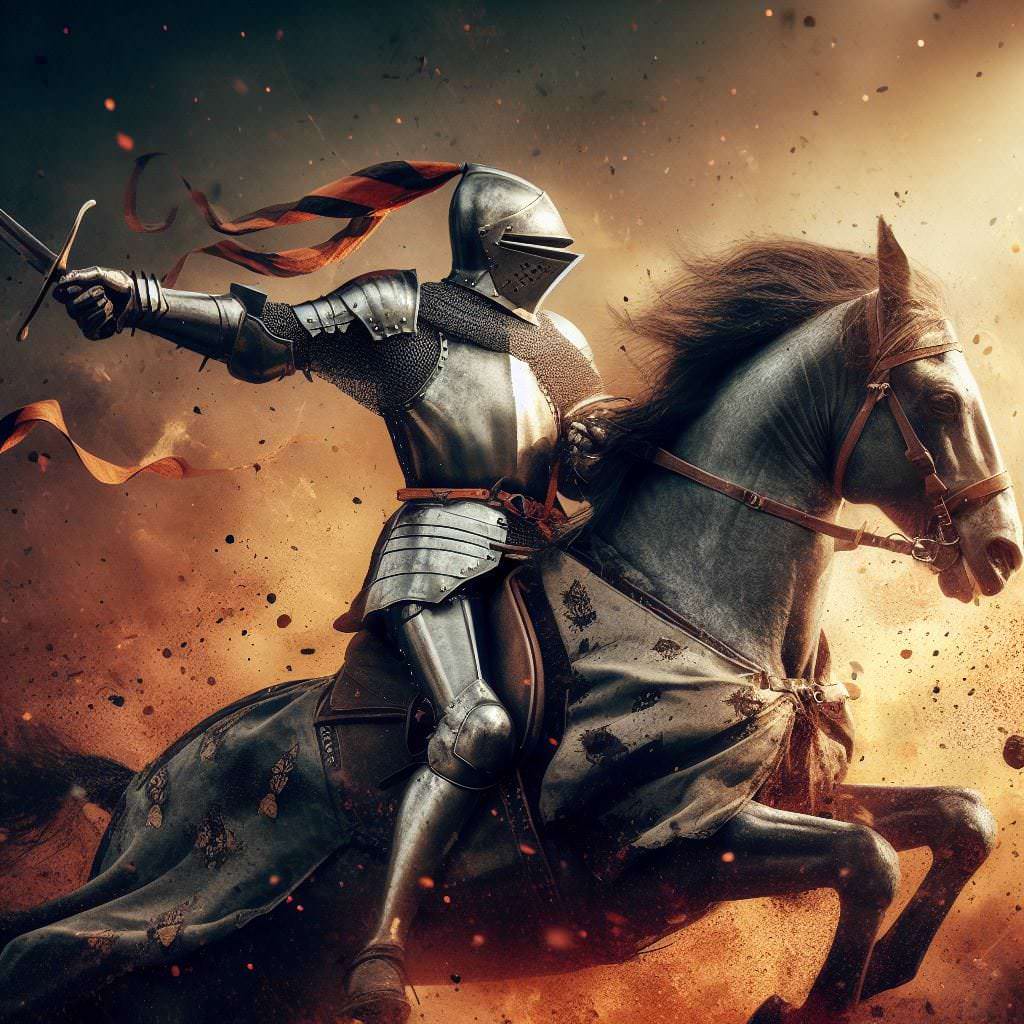The Chivalric Code

The chivalric code was the acceptable way knights acted in the Middle Ages. Knights were praised for being courageous and honorable, and scolded for running away from battle and using subterfuge.
Knights could do many things to prove their courage. Being valiant in battle was usually rewarded with land or presents from the ruler the knight served. A knight was also expected to stand up for his lady. Duels and jousts were also a way for the knight to prove himself.
Some rules in the chivalric code can be summarized in:
- Defend the Church.
- Always defend a lady.
- Be courageous, not cowardly.
- Tell the truth.
- Be generous.
- Be charitable and defend the poor and helpless.
- When on a quest, remove his armor and arms only while sleeping.
Training for knighthood began at the age of seven, when sons of knights or lords became pages. A page would learn hunting, religion, reading, writing, and combat. At the age of fourteen, the page would become a squire, who would have more responsibilities. A squire would serve in the castle, continue training in combat and chivalry and social behavior. He would also serve a knight, following him into battles and adventures.
Before becoming a knight, a squire would have to perform a ceremony. This involved taking a bath the evening before he was knighted, and staying up all night praying. The knight would then take an oath that he would obey the chivalric code, then he would be knighted by the master of the ceremony, who would be either the king, a nobleman, or the squire's father (if he was a knight). A knight could also confer knighthood to a squire who was brave on the field of battle.
The chivalric code was present in different areas of the world, not just Europe. For example, bushido, the Japanese version of the chivalric code that applied to samurai, emphasized loyalty and honor.




